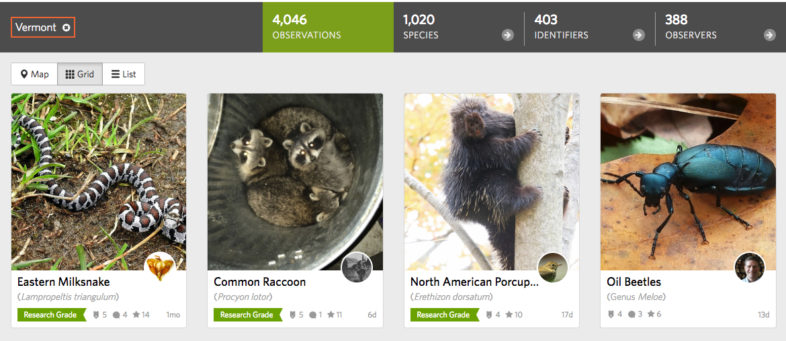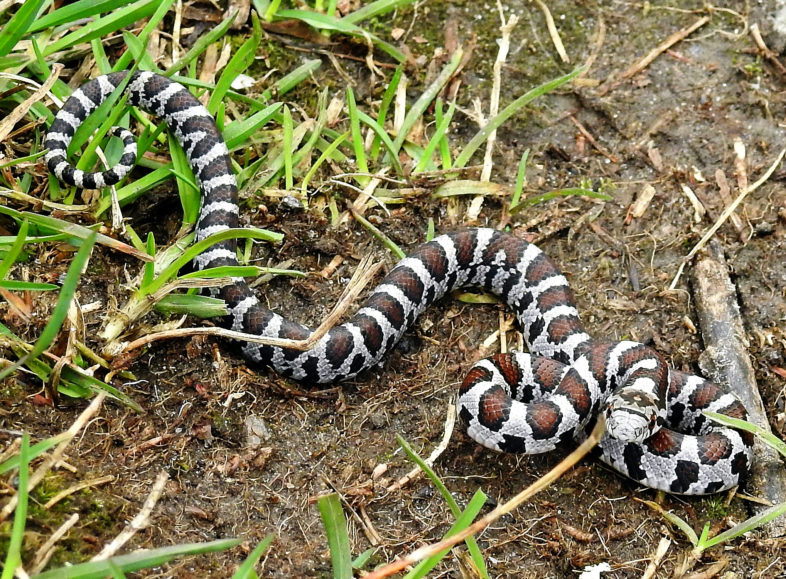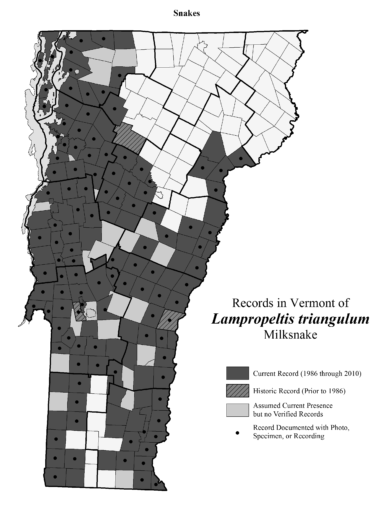
It was a hotly contested race to the end with these amazing photo-observations this month. Click on the image to visit the page at the Vermont Atlas of Life on iNaturalist and see and learn more.
It was a hotly contested race this month, with the winner squeaking by the other amazing photo-observations. Congratulations to Joanne Russo for winning the October 2018 Vermont Atlas of Life iNaturalist photo-observation of the month. The image of a beautiful Eastern Milksnake was the most popular photo-observation.

An Eastern Milksnake photographed and submitted by Joanne Russo. Click on the image to see the observation at the Vermont Atlas of Life on iNaturalist.
Eastern Milksnakes (Lampropeltis triangulum) can grow to 2 to 3 feet long (the longest documented in Vermont is 43.5 inches). It is also known colloquially as the “Spotted” or “Checkered Adder”, but it isn’t really an adder. Adults feed mainly on rodents such as voles, mice, and rats, but will also eat birds, bird eggs, snake eggs, and even other snakes. Hatchlings seem to feed mainly on other young snakes. When prey is captured, it is constricted until it suffocates, and then swallowed whole.

Eastern Milksnake records by town in the Vermont Reptile and Amphibian Atlas. Click on the map to learn more.
Milksnakes have a wider geographical range than most other species of snake. They can be found in the United States almost anywhere east of the Rocky Mountains. They’re widespread in lower elevations in most of Vermont where they most often inhabit old fields and buildings, stone walls, and rocky ledges. All of the observations in the Vermont Atlas of Life are shared with the Vermont Reptile and Amphibian Atlas. Help us fill in the missing towns on their map!
Visit the Vermont Atlas of Life on iNaturalist and you can vote this month by clicking ‘fav’ on your favorite photo-observation. Make sure you get outdoors and record the biodiversity around you, then submit your discoveries and you could be a winner!

It looks like the last observation for Hartford is ‘historical’. I observed an adult while moving wood chips in our back yard; it had apparently been keeping warm in the decaying chips. Later found an empty clutch of eggs in the same pile. I will confirm the year with my landlord and add an entry in iNaturalist.
Great! Thanks for doing that Bob!
Just saw one six to seven inches long in my back yard southern NH. Thanks for helping me identify this beauty
One found in building cracks during renovation on church in Orwell, VT that my partner was leading.